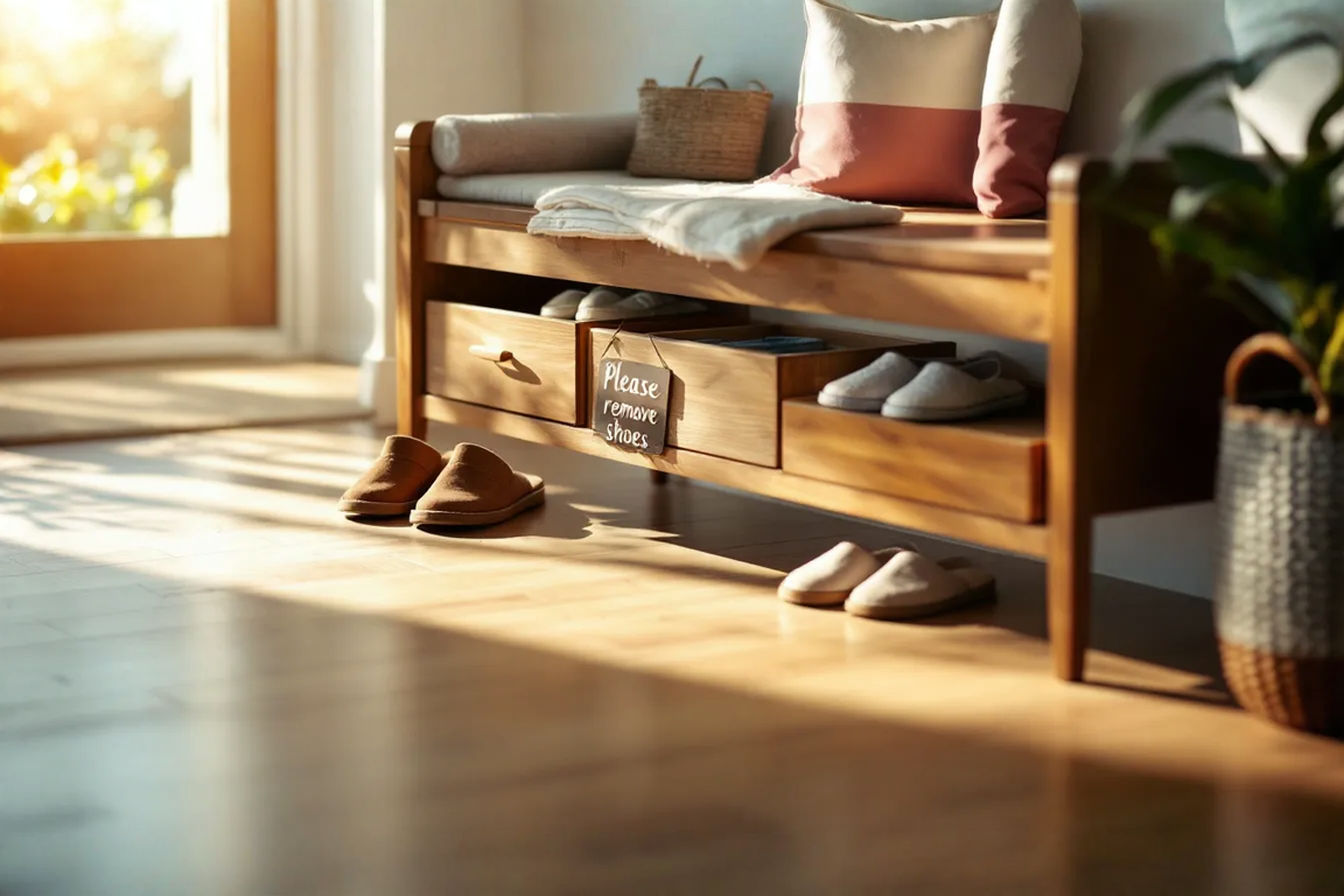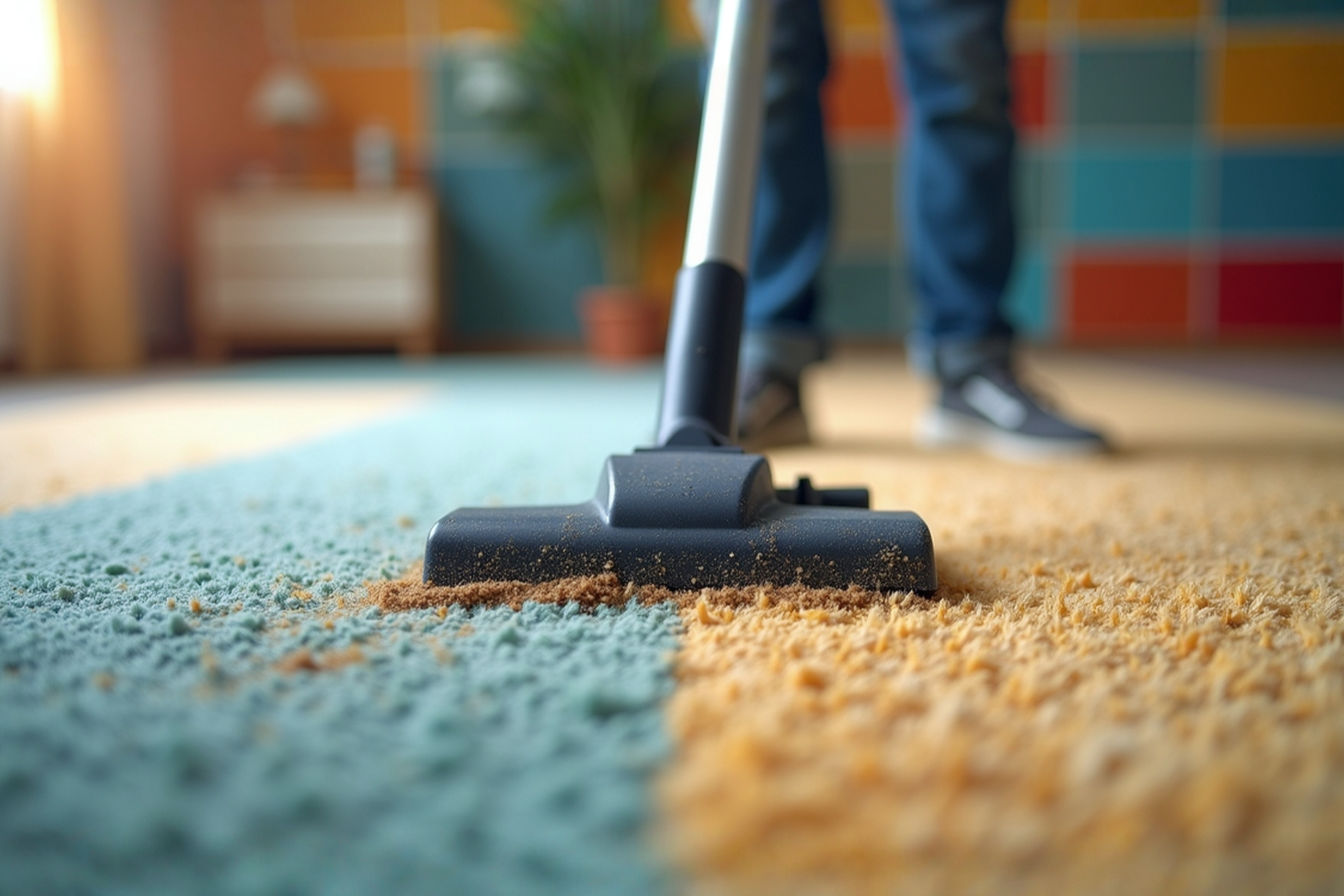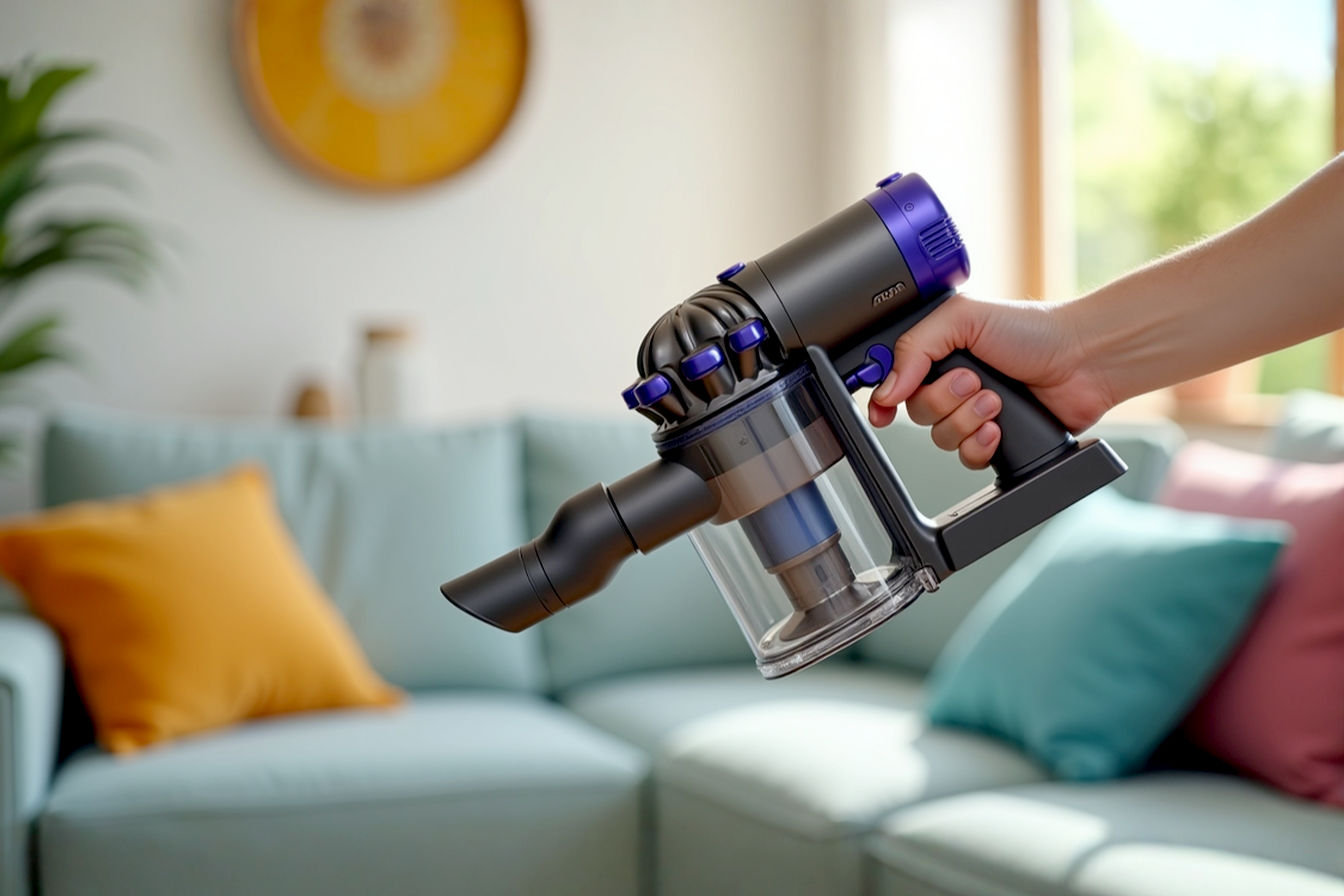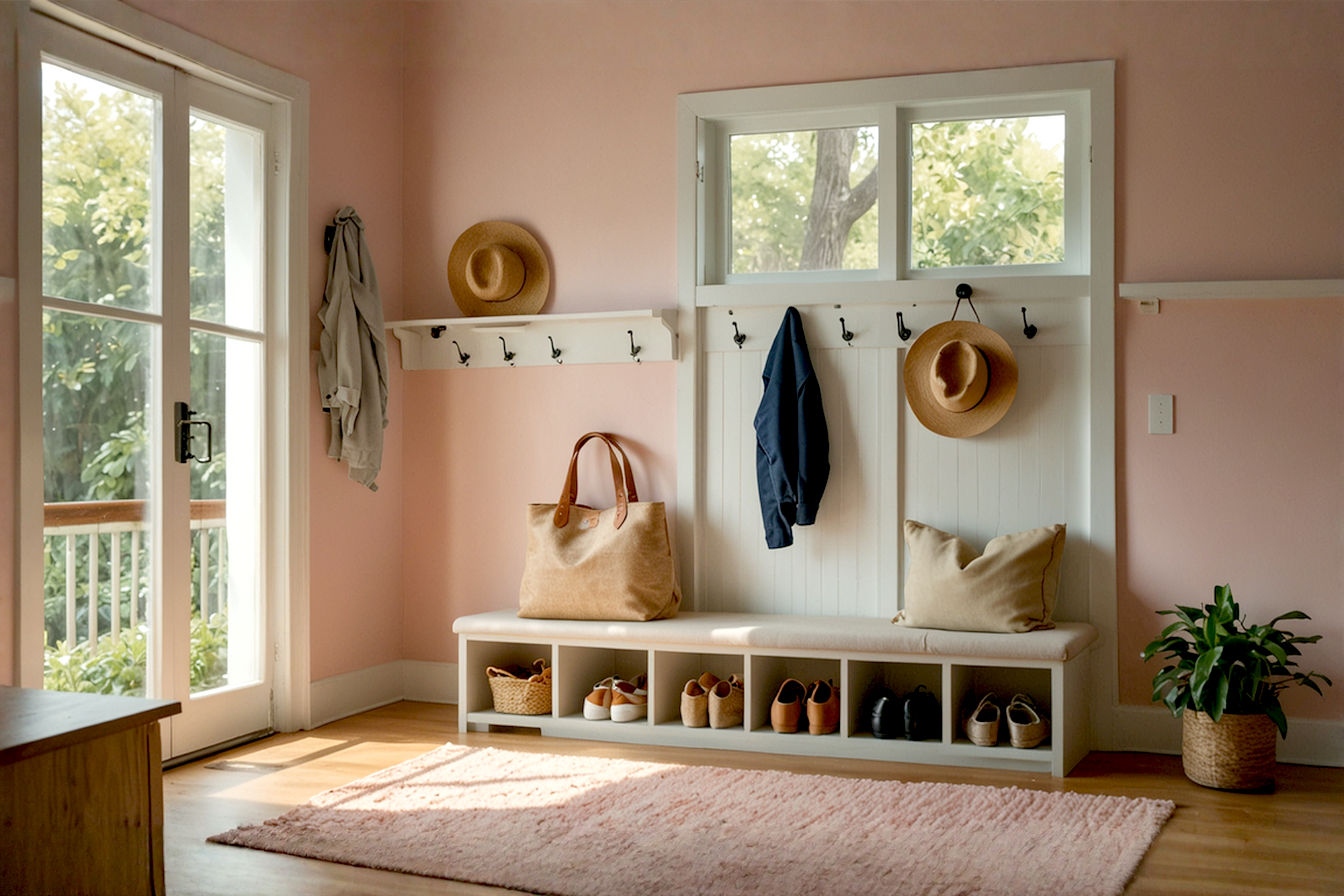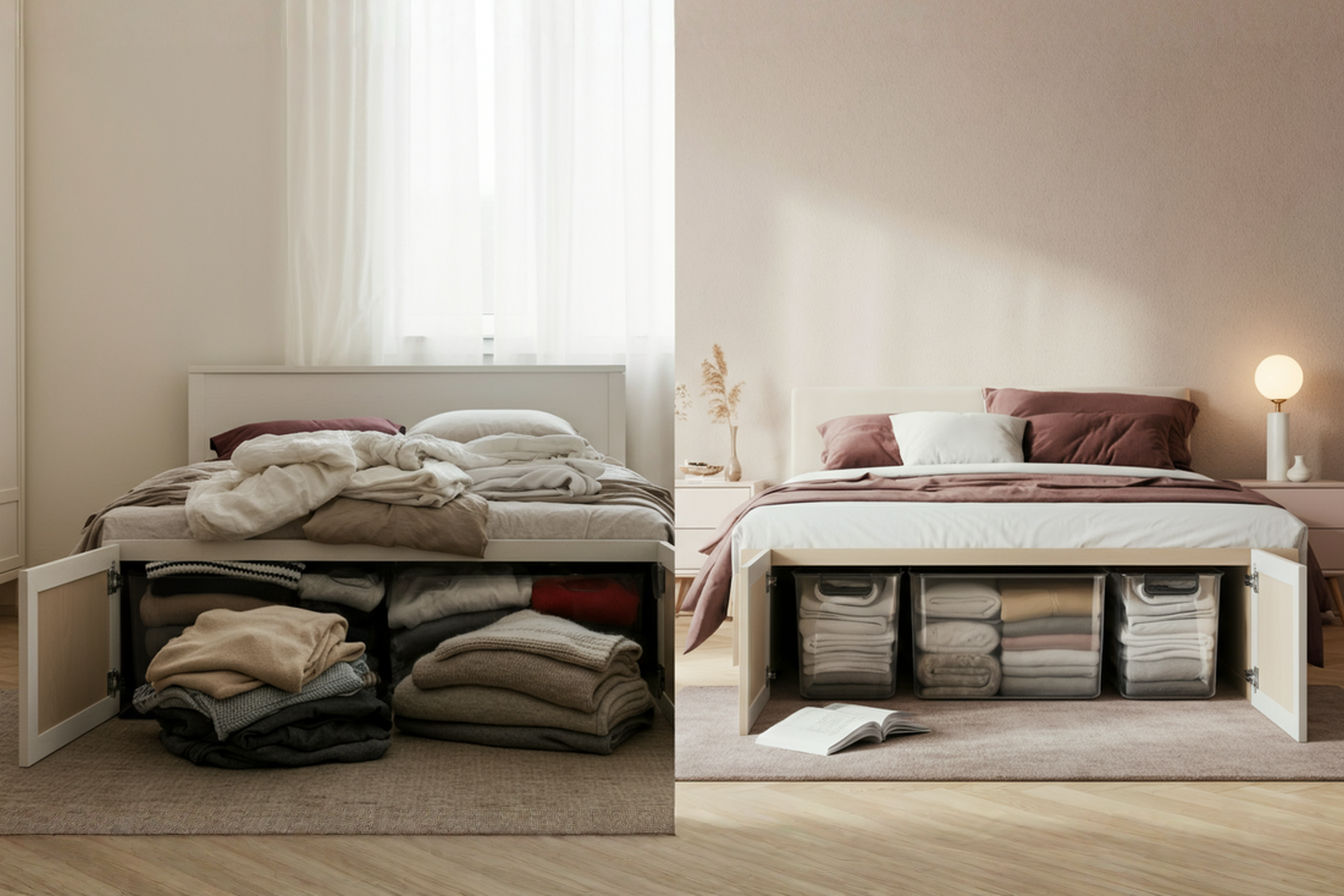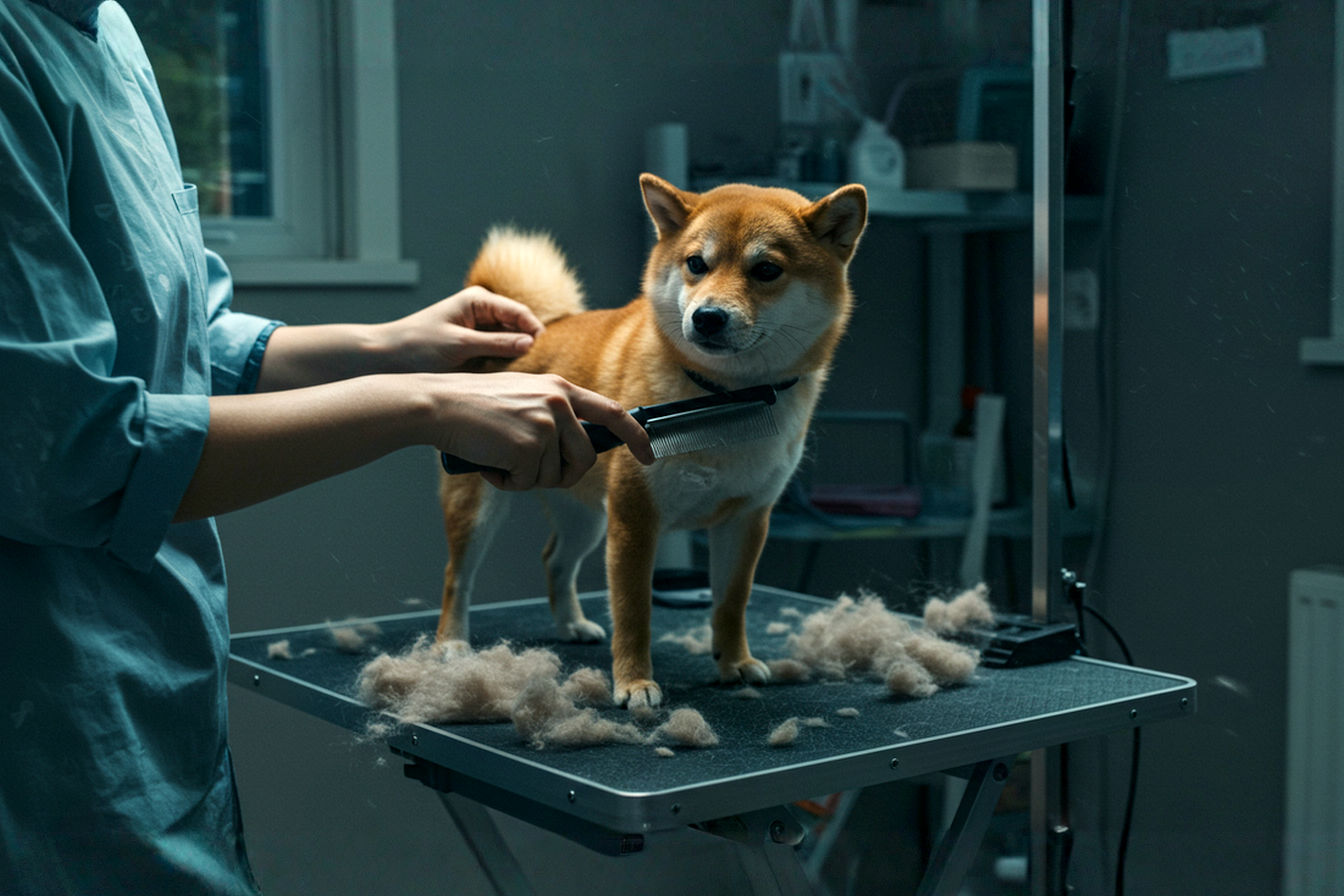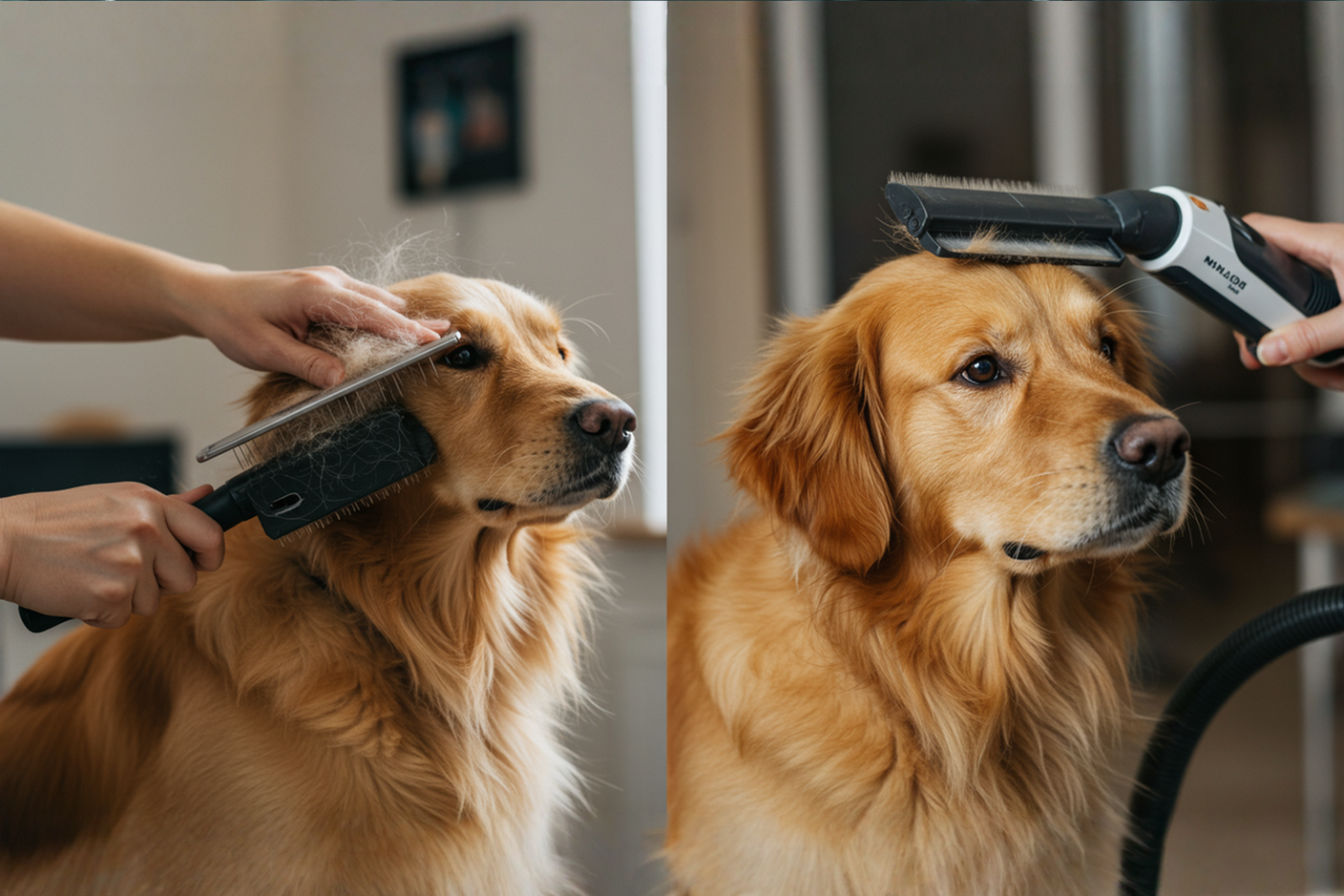Shoe Removal Culture: Establishing Habits That Reduce Vacuum Frequency
Your shoes track in 421,000 bacteria per step. Learn how establishing a shoe removal culture can dramatically cut vacuum frequency, protect your floors, and improve your home’s health environment.
This post may contain affiliate links. If you make a purchase through these links, we may earn a commission at no additional cost to you.
Did you know that your shoes transport approximately 421,000 bacteria into your home with each step? Or that the average pair of shoes comes into contact with fecal matter within the first two weeks of wear? These startling statistics highlight an often-overlooked aspect of home cleanliness: the impact of outdoor shoes on our indoor environments. By bringing outdoor contaminants inside, we inadvertently increase the need for frequent vacuuming and deep cleaning.
This comprehensive guide explores how establishing a shoe removal culture in your home can dramatically reduce cleaning frequency while creating a healthier living environment. Beyond merely saving time on household chores, a no-shoes policy offers numerous benefits for your home’s cleanliness, your flooring’s longevity, and your family’s overall health.
The Science Behind Shoe Contamination
Your shoes encounter countless surfaces throughout the day, collecting a surprising array of unwanted substances. Research from the University of Arizona found that the average shoe sole harbors more than 400,000 bacteria, including harmful pathogens like E. coli. Beyond bacteria, shoes collect:
- Physical debris: Soil, sand, small rocks, and plant matter
- Chemical residues: Pesticides, fertilizers, road salts, and industrial chemicals
- Biological matter: Fecal particles (both human and animal), mold spores, and pollen
- Petroleum products: Oil, gasoline residues, and tar from roads and parking lots
These substances don’t just remain on your shoes—they make their way into your living spaces, settling into carpets, embedding in grout lines, and circulating in your home’s air.
From Sidewalk to Living Room: The Transfer Process
The movement of outdoor contaminants into indoor spaces follows a predictable pattern. When you walk with outdoor shoes inside, you create what scientists call a “contaminant trail.” This transfer happens in three primary ways:
- Direct deposit – Particles stuck to shoes physically separate and remain on floors
- Progressive shedding – Contaminants gradually dislodge as you walk through the home
- Secondary transfer – Particles first deposit on floors, then transfer to other surfaces through air movement or contact
Studies examining contaminant spread show that particles from shoes can be found up to 16 feet from the entry point. With each step, the concentration decreases, but the spread continues throughout connected areas of your home.
The transfer rate—the percentage of contaminants that move from shoes to floors—varies by material. Sticky substances like mud might have a 70-90% transfer rate, while drier contaminants like dust might transfer at 30-50%. This explains why a single person wearing outdoor shoes inside can necessitate whole-house vacuuming.
Health Implications of Indoor Shoe Wearing
The practice of wearing outdoor shoes indoors creates several health concerns:
- Respiratory irritation: Pollen, dust, and other allergens tracked in on shoes become airborne during movement, potentially triggering asthma and allergy symptoms.
- Bacterial exposure: Pathogens from public restrooms, animal waste, or contaminated water can survive on shoe soles for days or weeks, creating invisible health hazards.
- Chemical exposure: Herbicides, pesticides, and industrial chemicals tracked in on shoes can be especially harmful to crawling babies and pets who have closer contact with floor surfaces.
- Toxin accumulation: Some contaminants like lead dust or persistent organic pollutants (POPs) build up over time, potentially creating long-term exposure risks.
A 2018 environmental health study found that homes with a strict no-shoes policy had indoor air with 50% fewer contaminant particles compared to homes where outdoor shoes were routinely worn inside.
Cultural Perspectives on Shoe Removal
Eastern Traditions and Practices
In many Asian cultures, removing shoes before entering homes has been standard practice for centuries:
- Japanese genkan: A dedicated transitional space between outdoors and indoors where shoe removal occurs. This architectural feature highlights the cultural importance of the boundary between outside and inside spaces.
- Korean traditional homes: Feature elevated floors that should never be stepped on with outdoor shoes, maintaining cleanliness for activities like sleeping and eating that traditionally take place on floor mats.
- Indian households: Often consider shoes ritually impure, with removal being both a cleanliness practice and a gesture of respect when entering sacred or personal spaces.
These cultures don’t view shoe removal as merely a cleanliness habit but as an important boundary ritual that separates the outside world from the sanctuary of home.
Western Approaches to Indoor Footwear
Western cultures have historically been more variable in their approach to indoor shoe wearing:
- Northern European countries like Sweden, Norway, and Finland typically practice shoe removal, partly due to weather conditions that make outdoor footwear particularly dirty.
- Central and Southern Europe have mixed practices, often dependent on weather and specific household preferences.
- North America has traditionally been more shoe-friendly indoors, though this is changing as awareness of health and cleanliness benefits spreads.
Historical factors affecting Western shoe practices include:
- Architectural differences (fewer ground-level living arrangements)
- Historical emphasis on footwear as status symbols
- Different flooring materials designed to withstand more wear
The Global Shift Toward Shoe-Free Homes
Recent decades have seen a global convergence toward shoe removal practices, driven by:
- Increased cultural exchange exposing more Westerners to Eastern practices
- Growing awareness of microbiological research on shoe contamination
- Rising popularity of delicate flooring materials like hardwood and luxury vinyl
- Greater health consciousness regarding indoor air quality and allergen reduction
This shift represents more than just adopting practices from other cultures—it reflects a growing understanding of how our everyday habits affect our living environments. The movement toward shoe-free homes transcends cultural boundaries, focusing instead on the universal desires for cleanliness, health, and home maintenance efficiency.
Benefits of Establishing a Shoe-Free Home
Reduced Cleaning and Maintenance Requirements
Implementing a no-shoes policy dramatically decreases the amount of dirt and debris entering your home, directly impacting your cleaning routine:
- Vacuuming frequency typically drops by 50-80%, depending on household size and outdoor conditions
- Deep cleaning sessions can often be reduced from weekly to monthly
- Spot cleaning incidents decrease as major soil sources are eliminated
- Cleaning product usage diminishes, creating both environmental and economic benefits
A 2020 home maintenance study found that no-shoes households spent an average of 87 fewer hours per year on floor cleaning compared to homes without such policies—that’s more than three full days reclaimed from cleaning chores.
The benefits extend beyond just time savings. With less abrasive dirt being ground into surfaces, the effectiveness of each cleaning session improves, resulting in consistently cleaner floors with less effort.
Extended Flooring Lifespan
Outdoor shoes cause significant wear to indoor flooring through multiple mechanisms:
- Abrasion damage from sand and grit particles acting like sandpaper
- Compression damage from the concentrated force of heels and hard soles
- Chemical damage from substances that break down protective finishes
- Moisture damage from wet shoes compromising water-sensitive materials
Industry experts estimate that removing outdoor shoes can extend carpet lifetime by 30-50% and hardwood floor finish longevity by up to 100%. The financial implications are substantial—replacing flooring represents one of the most significant home maintenance expenses.
For example, extending a carpet’s life from 5 years to 8 years in a 2,000 square foot home could save approximately $6,000-10,000 in replacement costs. Similarly, doubling the time between hardwood refinishing projects saves both money and the inconvenience of major home disruption.
Improved Indoor Air Quality
Many people don’t realize that floor contaminants don’t stay on the floor. Regular household activities—walking, playing, cleaning—create air movement that lifts particles into your breathing zone:
- Particulate matter from outdoor sources becomes airborne with movement
- Biological contaminants like bacteria and mold spores can become aerosolized
- Chemical residues from roads and treated lawns can evaporate into indoor air
Research from indoor environmental quality experts indicates that reducing floor contaminants through shoe removal policies can improve indoor air quality measurements by 25-40%. This improvement is particularly significant for:
- People with respiratory conditions like asthma
- Children whose developing lungs are more vulnerable to irritants
- Individuals with compromised immune systems
- Elderly residents with age-related respiratory sensitivity
Health Advantages for Household Members
Beyond air quality, shoe-free policies offer additional health benefits:
- Reduced allergen exposure from pollen, pet dander, and other outdoor allergens
- Decreased pathogen transmission from public spaces into your home
- Lower toxic chemical presence, particularly important for homes with crawling babies
- Beneficial foot health from allowing feet to breathe and function naturally
Interestingly, some podiatrists suggest that walking barefoot indoors provides foot strengthening benefits that contribute to better biomechanics and possibly fewer foot-related ailments. The human foot contains 26 bones, 33 joints, and more than 100 muscles, tendons, and ligaments—all designed to function optimally with natural movement patterns that shoes can restrict.
Creating an Effective Shoe Removal System
Designing a Functional Entryway
A well-designed entryway makes shoe removal convenient and natural, increasing compliance among household members and guests:
- Dedicated transition space: Ideally 3-5 square feet per person for comfortable changing
- Seating options: Bench, chair, or stool making removal and donning easier
- Visual cues: Clear indicators that this is a shoe removal area (shoe rack, sign, etc.)
- Weather considerations: Protection from rain/snow for people during the transition
The physical layout should create a natural flow that guides the shoe removal process. Consider the sequence of actions when someone enters—where they’ll stop, where they’ll sit, where they’ll place belongings, and how they’ll move from the entryway into the main living space.
Expert tip: Position the shoe storage so it’s visible and accessible before fully entering the home, creating a natural pause point that encourages removal before proceeding further.
Shoe Storage Solutions for Various Home Types
Different homes require different approaches to shoe storage:
For small apartments/limited space:
- Vertical storage solutions that utilize wall space
- Under-bench storage drawers
- Over-door hanging organizers
- Slim profile cabinets that maximize storage while minimizing footprint
For family homes with multiple users:
- Individual cubbies or bins labeled for each family member
- Tiered racks that display options clearly
- Separate zones for daily-use versus occasional shoes
- Child-height solutions that encourage independence
For homes with formal entryways:
- Closed cabinet solutions that conceal shoes
- Built-in benches with integrated storage
- Dedicated closet space with specialized shoe organization
- Decorative options that complement entryway décor
The ideal system balances three critical factors: sufficient capacity (experts recommend accommodating 3-5 pairs per household member for daily rotation), accessibility (easy to use without creating bottlenecks), and visual appeal (integrated with your home’s aesthetic).
Seasonal Considerations and Adaptations
Shoe removal systems must adapt to changing weather conditions:
Winter challenges:
- Space for bulky boots and snow-related gear
- Waterproof trays or mats to contain melting snow/ice
- Additional seating for more complicated footwear removal
- Storage for seasonal items like boot dryers or shoe covers
Summer adaptations:
- Increased ventilation for sweaty footwear
- Storage solutions for sandy beach shoes
- Space for sporting equipment and specialized summer footwear
- Wash station options for heavily soiled outdoor footwear
Transitional seasons:
- Flexibility to accommodate varying footwear types as weather fluctuates
- Organization systems that make seasonal rotation efficient
- Solutions for wet weather gear like umbrellas and rain boots
A truly effective system evolves with your household’s needs across seasons and years. Consider creating seasonal “shoe stations” that can be modified quarterly to address current requirements.
Addressing Common Concerns and Resistance
How to Introduce the Policy to Family Members
Transitioning to a shoe-free home often meets resistance from family members accustomed to wearing shoes indoors. Successful implementation strategies include:
- Education-first approach: Share information about contaminants and cleaning benefits rather than simply imposing rules
- Collaborative decision-making: Involve all household members in establishing the policy
- Gradual implementation: Begin with shoes-off in certain areas or at certain times
- Lead by example: Consistently practice what you’re asking others to do
For children specifically, consider creating visual reminders or turning shoe removal into a game with rewards for consistent participation. Teenagers may respond better to concrete statistics about contaminants or appeals to their developing independence and responsibility toward shared spaces.
Communication tip: Frame the policy in terms of benefits (“This helps us all stay healthier”) rather than restrictions (“You’re not allowed to wear shoes inside”).
Tactfully Handling Guest Situations
Guest shoe removal presents unique social challenges that require thoughtful approaches:
- Advance notice: When possible, inform guests before they arrive
- Clear but gentle signage: Visual cues like a decorative sign or obvious shoe storage
- Provide alternatives: Keep clean slippers, socks, or shoe covers available for guests
- Acknowledge the request: A simple “We’re a shoes-off household, would you mind?” works better than assuming compliance
Different social situations may require flexibility. Consider these context-specific approaches:
For casual gatherings: Direct but friendly communication works well: “We usually take our shoes off here—makes keeping the place clean so much easier!”
For formal events: You might choose to temporarily relax the policy or use elegant signage: “To preserve our new floors, we kindly request removing shoes.”
For service professionals: Offer shoe covers or designate specific work areas: “Would you mind either removing shoes or using these covers? We’re trying to minimize cleaning.”
The key is balancing your home maintenance preferences with making guests feel comfortable rather than inconvenienced.
Accommodating Special Needs and Circumstances
Some situations require exceptions or modifications to a strict no-shoes policy:
- Medical necessities: People with orthotic devices, prescribed footwear, or balance issues
- Elderly visitors: Who may have difficulty removing and replacing shoes
- Brief entries: Package deliveries or quick in-and-out situations
- Safety concerns: Work boots with protective features in homes under construction
For these circumstances, consider these accommodation strategies:
- Dedicated indoor shoes: Clean footwear used exclusively inside for those with medical needs
- Limited access routes: Designated pathways that can be cleaned more frequently
- Temporary floor coverings: Washable runner rugs for short-term exceptions
- Shoe covers: Disposable or washable options for necessary footwear
The goal should be maintaining the benefits of your shoe-free policy while being sensitive to legitimate needs that might require modifications.
Indoor Footwear Alternatives
House Slippers and Their Benefits
House slippers offer an excellent middle-ground between barefoot walking and outdoor shoes:
- Comfort benefits: Cushioning for hard floors and warmth in colder months
- Hygiene advantages: Barrier between feet and floor contaminants
- Floor protection: Soft soles that don’t damage delicate flooring
- Foot support: Options available with arch support or therapeutic features
When selecting house slippers, consider these factors:
- Construction material: Natural fibers like cotton, wool, or bamboo offer breathability
- Sole type: Non-marking rubber or suede provides traction without damaging floors
- Washability: Machine-washable options maintain better hygiene
- Durability: Quality construction with reinforced stitching for longer life
From a practical perspective, maintaining separate indoor footwear creates a psychological boundary between indoor and outdoor spaces. This mental shift reinforces the shoe removal habit and helps maintain the distinction between potentially contaminated outdoor shoes and clean indoor spaces.
Barefoot Benefits vs. Support Needs
Walking barefoot indoors offers distinct advantages and potential concerns:
Benefits of barefoot walking:
- Strengthens foot muscles and improves balance
- Enhances proprioception (awareness of body position)
- Allows feet to breathe and reduce moisture-related issues
- Provides sensory stimulation through varied floor textures
Potential concerns:
- Lack of support for those with foot conditions like plantar fasciitis
- Cold discomfort on hard surfaces in winter months
- Exposure to floor contaminants (though significantly reduced in shoe-free homes)
- Risk of minor injuries from household hazards
Foot health specialists often recommend a balanced approach—some barefoot time for natural strengthening combined with supportive indoor footwear when needed. This personalized approach acknowledges that foot health needs vary significantly between individuals.
Indoor-Only Shoe Options
For those requiring more structure than slippers but wanting to maintain a clean home, dedicated indoor shoes provide an excellent solution:
- Clean athletic shoes: Normal sneakers never worn outside, providing maximum support
- Orthopedic indoor shoes: Specialized footwear with therapeutic features used only indoors
- Structured slippers: Hybrid options with more support than traditional slippers
- Minimalist footwear: Indoor-only versions of barefoot-style shoes offering protection with minimal interference with natural movement
The key distinction is consistent dedication of these shoes to indoor-only use, maintaining the contamination barrier between outdoor and indoor environments.
For households with members requiring specialized footwear for medical reasons, establishing a “clean zone” process helps maintain both foot health and home cleanliness. This typically involves:
- Thorough cleaning of the supportive shoes
- Designation as indoor-only footwear
- Periodic cleaning maintenance to prevent indoor contamination buildup
- Separate storage away from outdoor footwear
Measuring Success – Beyond Vacuum Frequency
Tracking Cleaning Time Reduction
To fully appreciate the benefits of your shoe-free policy, consider tracking these metrics:
- Cleaning frequency: Document how often you need to vacuum different areas
- Cleaning duration: Track how long cleaning sessions take before and after implementation
- Spot cleaning incidents: Note how often unplanned cleaning becomes necessary
- Deep cleaning intervals: Monitor how the time between intensive cleaning sessions changes
Many households report that vacuum frequency drops from 2-3 times weekly to once weekly or less after establishing consistent shoe removal habits. Similarly, mopping requirements often decrease by 50-70%, particularly in high-traffic areas.
Practical tracking tip: Use a simple cleaning calendar for 30 days before implementing your policy, then compare with 30 days after consistent implementation. The difference often provides powerful motivation to maintain the new habits.
Noticing Improvements in Home Cleanliness
Beyond quantitative measures, qualitative improvements become apparent:
- Visible cleanliness: Less visible dust accumulation on surfaces and in corners
- Tactile feedback: Floors that remain cleaner to the touch for longer periods
- Reduced dust resettling: Less particulate matter becoming airborne during cleaning
- Improved appearances: Flooring that maintains its like-new appearance longer
Pay particular attention to areas that previously required frequent attention—entryways, hallways, and kitchen floors. These high-traffic zones typically show the most dramatic improvement under shoe-free policies.
Professional house cleaners note that homes with established shoe removal practices require approximately 30% less deep cleaning effort compared to similar homes without such policies. This translates not only to time savings but to more effective cleaning outcomes.
Long-term Benefits to Home and Health
The cumulative advantages of a shoe-free home compound over time:
- Flooring longevity: Reduced replacement and refinishing frequency
- Air quality improvement: Measurable reduction in particulate matter
- Allergen management: Decreased symptom triggers for sensitive individuals
- Chemical exposure reduction: Lower levels of outdoor toxins in your indoor environment
One particularly notable long-term benefit is the reduced accumulation of difficult-to-remove contaminants in porous surfaces. Carpets, grout lines, and wood grain in homes with outdoor shoes typically accumulate embedded soil that eventually becomes impossible to remove completely, necessitating replacement. Shoe-free homes largely avoid this progressive deterioration.
From a health perspective, the reduction in tracked-in allergens, bacteria, and chemicals creates a significantly healthier living environment. Households with young children often report fewer instances of unexplained respiratory symptoms and skin irritations after establishing consistent shoe removal practices.
Conclusion
Establishing a shoe removal culture in your home represents more than just a cleaning shortcut—it’s a fundamental shift in how you manage your indoor environment. By creating this single boundary between outdoor contaminants and your living spaces, you can dramatically reduce cleaning frequency while creating a healthier home for your family.
The benefits extend far beyond simply vacuuming less often. Your floors will last longer, your indoor air will contain fewer contaminants, and the overall cleanliness of your home will improve noticeably. These advantages compound over time, making the initial adjustment period well worth the effort.
Remember that transitioning to a shoe-free home doesn’t need to happen overnight. Begin with clear communication, thoughtful entry design, and comfortable alternatives like house slippers. Allow household members time to adapt, and develop systems that work for your specific living situation and needs.
Whether motivated by cleanliness, health concerns, or cultural traditions, a shoe removal policy creates a more intentional boundary between the outside world and your sanctuary. In establishing this simple habit, you’re not just reducing vacuum frequency—you’re creating a cleaner, healthier, and more mindful home environment.

